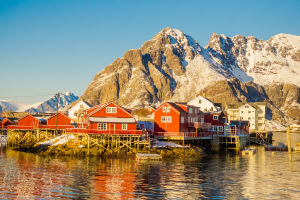Ever wondered what it’s like to hang out with llamas at one of the most breathtaking lakes on the planet? Join us as we dive into the magic of Laguna Colorada Lake and get to know its elegant llama residents.
We’ll explore some cool facts about these amazing animals and soak in the stunning red waters of the lake. So, Lykkers, grab a cup of coffee, kick back, and let’s chat about this incredible spot and the awesome llamas that make it even more special. Can’t wait to share this adventure with you!
Laguna Colorada Lake, nestled in the Andes of Bolivia, is a breathtaking destination known for its striking red waters and abundant wildlife. Among its unique inhabitants are the llamas, graceful relatives of alpacas and vicuñas. Here are some fun facts about these fascinating animals:
1. Size and Appearance: Llamas are larger than their relatives in the camelid family. They stand about 1.7 meters (5.6 feet) tall at the shoulder and weigh between 250 to 450 pounds. Their long necks and distinctive, expressive faces make them easily recognizable.
2. Versatile Animals: Llamas have been used as pack animals for centuries, particularly in the Andes. Their sturdy build allows them to carry loads of up to 25 to 30 percent of their body weight over long distances. They are also known for their ability to navigate rough terrains.
3. Warm and Soft Wool: Like vicuñas, llamas have wool that is both soft and warm, though it is not as fine as vicuña wool. Llama wool comes in various colors, including white, brown, gray, and black.
4. Social Behavior: Llamas are highly social animals and thrive in groups. They have complex social structures and communicate with each other using a variety of sounds, including hums, clicks, and alarm calls. They also engage in mutual grooming to strengthen social bonds.
5. Diet and Digestion: Llamas are herbivores and primarily graze on grasses, but they can also eat leaves, twigs, and other vegetation. They have a unique digestive system with three stomach compartments, which allows them to efficiently break down fibrous plant material.
6. Conservation and Management: While llamas are not endangered, they are an integral part of the Andean ecosystem and culture. Sustainable management and conservation efforts ensure their populations remain stable and that their habitats are preserved.
In Laguna Colorada Lake, the presence of llamas adds an extra layer of enchantment to this already stunning location. The lake itself is known for its vivid red color, caused by the high concentration of red algae and other microorganisms. Set against this dramatic backdrop, the llamas roam freely, grazing on the surrounding grasses and creating a picturesque scene.
Visitors to Laguna Colorada Lake are often captivated by the sight of these elegant animals against the vivid red waters. The lake is situated at an elevation of about 4,278 meters (14,435 feet), making it one of the highest lakes in the world. The high altitude and extreme weather conditions only add to the llamas’ charm and resilience.
In summary, the llamas of Laguna Colorada Lake are not only a symbol of the region’s natural beauty but also a testament to the success of sustainable management efforts. Their presence highlights the importance of preserving unique ecosystems and the delicate balance of life within them.


